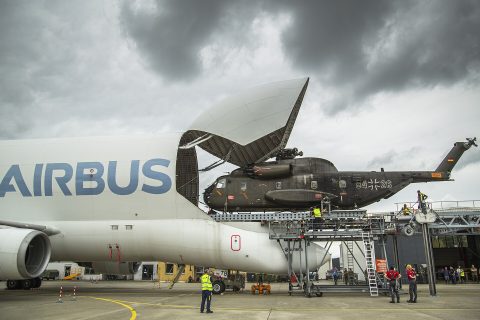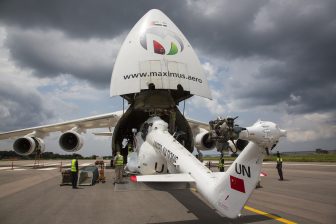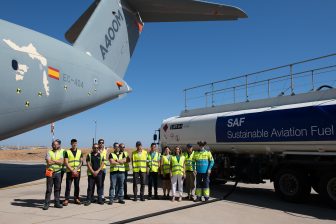
Airbus tests loading system for outsized military cargo on Beluga
Airbus Defence and Space developed and tested a system to load outsized military cargo into the Airbus Beluga A300-600ST aircraft. A CH53 military medium-lift helicopter was loaded into the Beluga yesterday, in Manching, Bavaria, during a verification exercise with the German military, the system’s first customer.
Michael Schoellhorn, CEO of Airbus Defence and Space said: “The demand for outsized air cargo capability is on the rise. Capacity is scarce and, in light of current geopolitical developments, many customers are looking for new, fast and efficient solutions. This is exactly what we offer with our BelugaST fleet. Our teams have been working on a remarkable solution to facilitate a speedy, efficient and autonomous handling to load heavy military cargo onto the aircraft. Speed, agility and autonomy are crucial elements for our customers when it comes to such operations.”
The system
The new system has been unveiled to customer representatives from international armed forces. It was developed and manufactured in a year and a half, from the initial brainstorming with the German forces, to its verification, which still needs final confirmation by the Bundeswehr in the next weeks.
The system can load a CH53 helicopter in a state of reduced dismantlement in under 90 minutes, while the actual loading process into the Beluga aircraft can be done in about an hour. The system requires no crane and has a lifting capacity of 35 tonnes. It can also be relocated to the aircraft’s destination.
Whereas the BelugaST fleet of five aircrafts was previously used to transport large aircraft sections between various Airbus sites, the company has now announced plans to offer the services of its existing BelugaST fleet. Indeed, Airbus will now use the new BelugaXL, based on the larger A330-200 platform.



